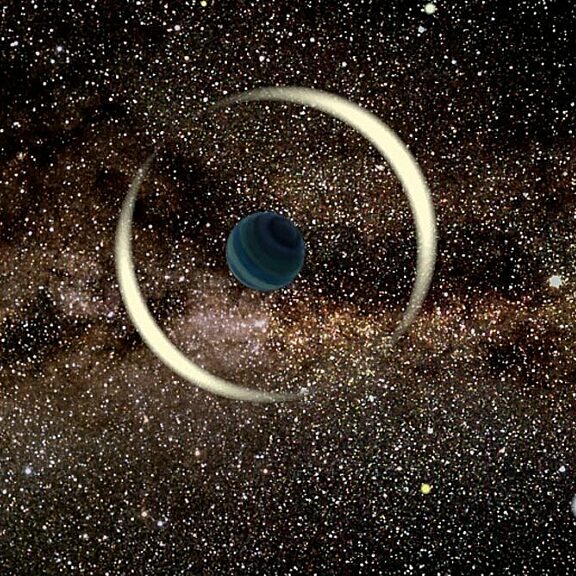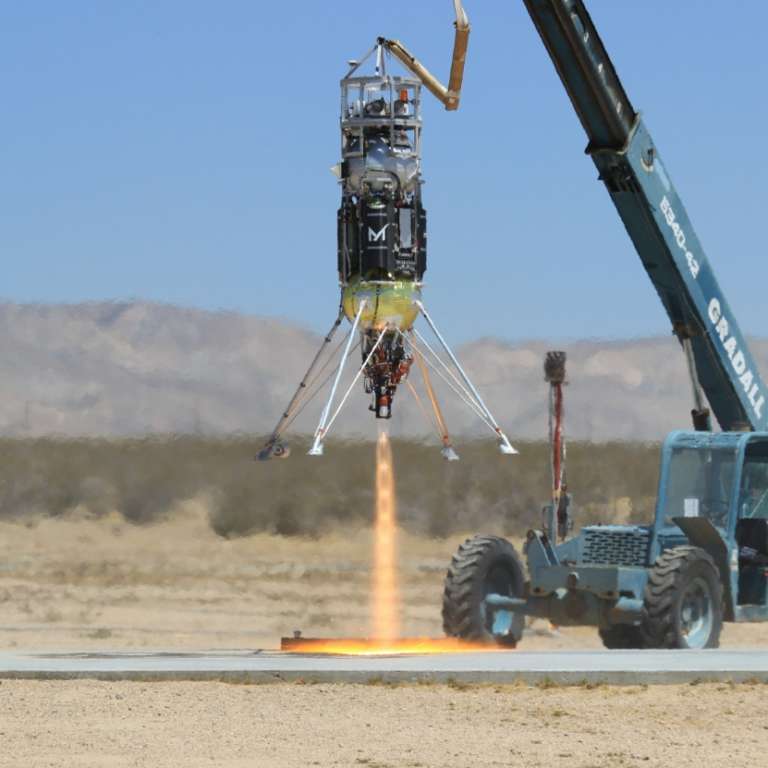Facts Worth Sharing
- Collecting samples from other worlds is important, but expensive. We need reliable, low-cost sample technologies to maximize the return from planetary missions.
- PlanetVac, developed by Honeybee Robotics and supported by The Planetary Society, is a reliable, flexible, low-cost sample collection technology.
- Our members and supporters funded PlanetVac tests in 2013 and 2018, helping it book flights to the Moon and Phobos.
The Challenge
Some of our biggest planetary science discoveries come from analyzing bits and pieces of other worlds. Soil samples examined by NASA’s Curiosity rover confirmed Mars once had liquid water conducive to life. Rocks brought to Earth by Apollo astronauts showed us the Moon is about 4.5 billion years old. Grains of dust captured by NASA’s Stardust spacecraft contained amino acids, confirming comets can carry the building blocks of life.
No matter whether we’re picking up planetary pieces to analyze directly on other worlds or return to Earth, sample collection is still hard—and expensive. Robotic scoops and drills are heavy, complicated, and power hungry, and work differently on low-gravity worlds. There are a wide variety of sample collection techniques; Japan’s Hayabusa missions fired bullets into asteroids to kick up material for collection!
What if there were a simpler solution? Meet PlanetVac, a low-cost, high-reliability sample system designed to increase the science return from missions to other worlds. Built by space technology company Honeybee Robotics, PlanetVac fires a blast of gas into the surface, stirring sample material into a collection container for onboard analysis or return to Earth. In its simplest form, PlanetVac has just one moving part—the valve that opens to release the gas—and can be attached directly to a spacecraft’s lander leg, meaning it’s ready to go as soon as the spacecraft touches down.

How are we helping?
The Planetary Society’s science and technology program identifies promising future space technologies that need extra funding to become reality. Honeybee Robotics has developed and built hardware for multiple Mars missions, including Spirit, Opportunity, Phoenix, Curiosity, and Perseverance. We’ve worked with Honeybee on other projects, such as Planetary Deep Drill.
In 2013, Planetary Society members helped fund an end-to-end lab test of PlanetVac in a simulated Martian atmosphere. A pint-sized PlanetVac funneled some fake Mars soil into a small rocket, which even blasted off for added visual effect!
Five years later in 2018, we helped Honeybee take the technology out on a real-world test flight aboard a rocket called Xodiac. Xodiac, built by Masten Space Systems, takes off and lands vertically in California's Mojave Desert, allowing hardware developers to simulate the stresses of a rocket launch and landing. PlanetVac was attached to the rocket’s leg and successfully collected 332 grams of simulated Martian soil.
By providing key funding for these tests, our donors demonstrated PlanetVac was ready for real space missions. NASA has since selected PlanetVac to fly to the Moon as part of its Commercial Lunar Payload Services program. The space agency is also contributing a modified PlanetVac to Japan's Martian Moons eXplorer mission, or MMX. MMX will launch in 2026 to collect a sample from Mars’ potato-shaped moon Phobos. The samples from PlanetVac and another collection instrument will return to Earth in 2031, and are expected to reveal where the moon came from and other insights about early Mars.
PlanetVac Testing on Xodiac Rocket In 2018, Planetary Society members and supporters helped fund a test of the PlanetVac sample collection technology aboard a rocket called Xodiac. Xodiac, built by Masten Space Systems, takes off and lands vertically in California's Mojave Desert, allowing hardware developers to simulate the stresses of a rocket launch and landing. PlanetVac was attached to the rocket’s leg and successfully collected 332 grams of simulated Martian soil.
What can you do to support PlanetVac?
Carl Sagan co-founded The Planetary Society to give you a role in space exploration. Your financial contribution to projects like PlanetVac help enable future space science discoveries. You can also share your excitement for our science and technology projects and explain why they’re important, helping us build support for future programs. You know your audience best; we've got tools to help.
Learn more
- Find out why current sample return missions like OSIRIS-REx and Hayabusa2 are so important, and learn about the ambitious effort to return samples of Mars to Earth
- Stay up to date on our science and technology projects by signing up for The Downlink, our weekly newsletter
- Learn about our sci-tech program and explore our past and present projects
- Dive into a paper on the PlanetVac MMX mission published for the 2020 Institute of Electrical and Electronics Engineers 2020 Aerospace Conference
Tell the world
- Spread the Facts Worth Sharing at the top of this article on social media
- Send this page to others using the short URL: planetary.org/planetvac
- Share pretty pictures of the Moon and Phobos, two places PlanetVac will soon visit
Ready to take your next steps as a space advocate? Become a member and find out how you can take action in your community and government:
Action Center
Whether it's advocating, teaching, inspiring, or learning, you can do something for space, right now. Let's get to work.
PlanetVac Image Gallery
Recent articles about PlanetVac
What to look forward to in space in 2024
A total solar eclipse and the launch of Europa Clipper are on our list of cosmic events to get excited about this year.
NASA and JAXA to Send Planetary Society-supported Sample Technology to the Moon and Phobos
PlanetVac, developed by Honeybee Robotics, is designed to be a reliable, flexible, low-cost sample collection technology.
Your Impact: September Equinox 2019
Your LightSail 2 spacecraft is in space, controlling its orbit solely on the power of sunlight.
Recent Planetary Radio episodes about PlanetVac
A distant, lonely planet has been discovered as it wanders the galaxy, while Bill Nye helps us celebrate selection of a radically-simple sample collection system for trips to the Moon and Mars’ moon Phobos.
Join Mat Kaplan in California’s Mojave Desert for special coverage of not one but two rocket flights and a real world test of PlanetVac, the innovative, radically simple way to collect surface samples from other worlds.
Space is hard. Sample collection and return is harder still. That’s why the radically-simplified PlanetVac system from Honeybee Robotics is so intriguing.


 Explore Worlds
Explore Worlds Find Life
Find Life Defend Earth
Defend Earth















